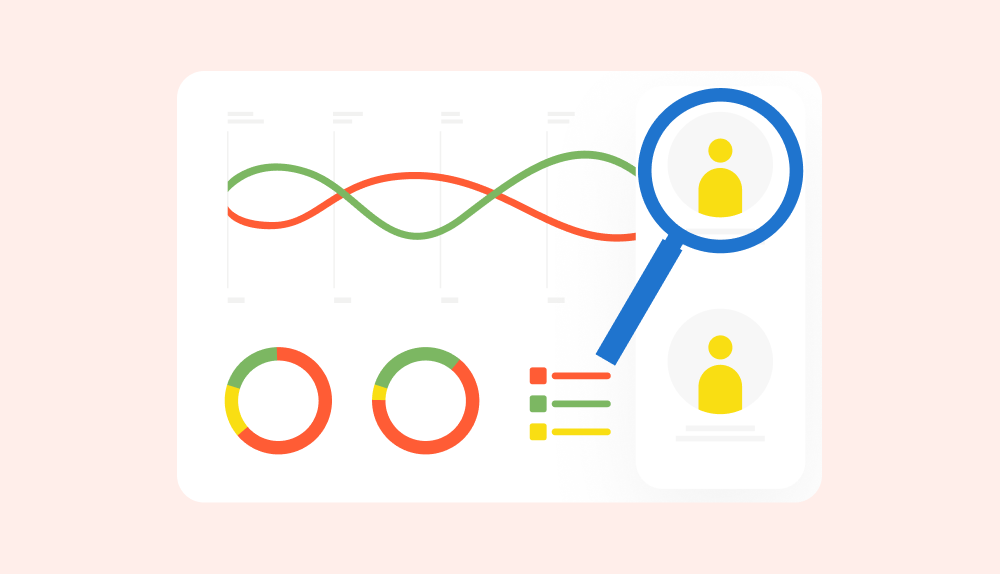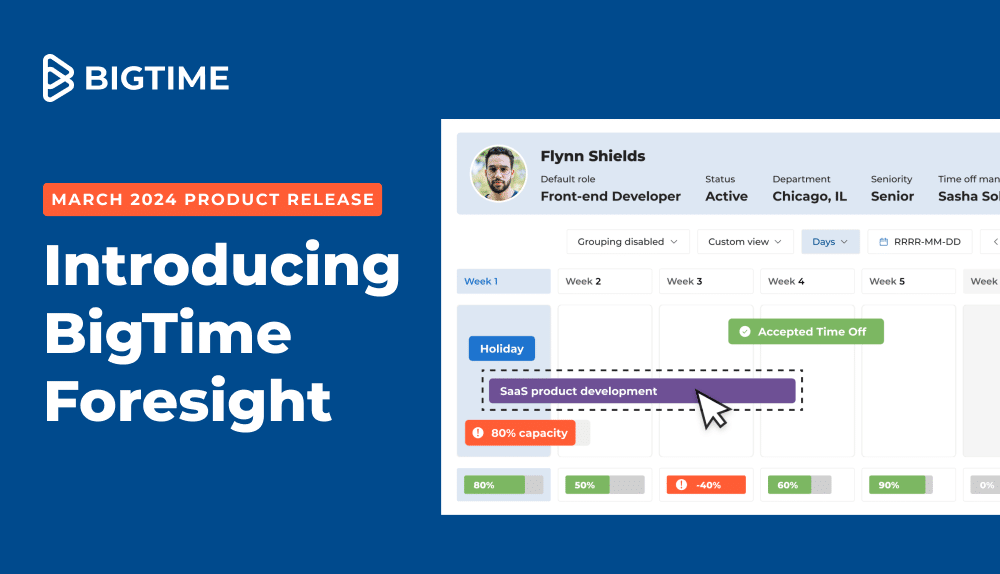Boosting project margin isn’t solely about increasing revenue; it’s about securing a brighter financial future for your projects and your firm. This approach allows you to invest in project resources, attract top talent, broaden project scopes, and tackle more ambitious projects, laying the groundwork for long-term success.
By forecasting project margins with resource planning software, organizations can pinpoint areas for improvement and optimize resource allocation, leading to informed decisions that enhance profitability and increase margins over time.
Sounds great, right? That’s why we’ve put together this article to guide professionals like you in calculating project margins, so you can start enjoying these benefits.
In this article, you’ll find:
- The definition of profit margin and all its types.
- The reasons behind the importance of profit margins.
- The factors that might affect profit margin in your projects
- Project margin formulas for classic, gross, net profit margin, and more.
- Project management tools that can help you keep an eye on the business’s financial health.
What is the project margin? Definition
A project profit margin refers to the difference between the revenue generated by a project and the total costs incurred in executing that project. It represents the profit earned from the project and is a key performance indicator used to assess the financial performance and success of the project.
Why is project profit margin important?
Monitoring the financial health of the project is the key to its ultimate success and avoiding unforeseen obstacles. In general, that is the main objective of calculating profit margin.
Still, it’s not a calculation for the sake of the calculation. Monitoring project margins is a key component of project management, as it allows you to monitor operating expenses and react to any
and ensure your projects achieve higher profit margins in the future.

What factors affect project profit margin?
Fluctuations in project profit margin are not a rare occurence. In fact, there are many factors that can affect the financial success of your project both during its execution and after it is completed. Those factors include:
- Project scope and complexity. More intricate projects tend to have higher costs due to specialized skills, advanced technology, and additional time spent on planning and execution. They are also often prone to scope creep.
- Labor costs. Skilled labor, overtime, and the number of workers required can all impact the profit margin. Mismanagement of labor resources or underestimating labor costs can result in reduced margins.
- Time management. Time is money, and delays or inefficiencies can significantly affect margins. If a project goes over schedule, it can lead to higher labor and operational costs, eating into profitability. On the other hand, completing a project ahead of schedule can help improve margins.
- Overhead costs. Indirect costs, such as administrative expenses, office rent, utilities, and project management overheads, must be factored into project costs. These expenses can add up, reducing the overall profit margin if not carefully controlled.
- Pricing strategy. The pricing model used for the project directly affects margins. Underpricing can result in slim margins or losses, while overpricing can lead to client dissatisfaction or lost business opportunities.
- Market conditions. Economic factors such as inflation, interest rates, and industry-specific trends can affect both costs and demand. For example, an economic downturn might increase material costs or reduce clients’ willingness to pay premium prices, lowering profit margins.
- Contract terms. The terms of the project contract, including payment schedules, penalties for delays, and cost-sharing agreements, can have a significant impact on margins.
Types of project profit margin
While basic project margin offers a reasonable insight into project profitability, there are also other types of profit margins that help project managers shed more light on the project budget. Those include:
- Gross profit margin
- Net profit margin
- Operating profit margin
- Contribution profit margin.
The profit margins can also be divided by the period they encapsulate. In this classification, we can describe two types of such margins:
- Current project margin – a profit margin that can be calculated at any point on the project timeline.
- Projected project margin – a profit margin project managers expect to achieve at the end of the project. Typically, it acts as a benchmark for the entire project, allowing the team to compare the budget to the expected financial KPIs.
How to calculate gross margin?
To calculate gross profit margin, you can use the formula below:
Gross Margin = (Revenue – Direct Costs) / Revenue × 100
Where:
- Project revenue is the total income generated from the project.
- Project costs are all the direct costs incurred in executing the project, such as labor costs, raw materials, equipment and software.
This simple, yet effective gross project margin formula is a perfect solution for ensuring financial success of the project throughout its duration and allows for making informed business decisions based on in-depth cost control. Still, it lacks a broader overview of company-wide costs – a gap other types of project profit margin can fill in.
How to calculate net profit margin?
Net profit margin for a project provides a broader view of profitability by considering all expenses, including taxes, overhead, and non-operating costs. Use the formula:
Net Profit Margin = (Net Profit / Revenue) × 100
In this net profit margin formula, net profit is a total revenue of the project minus all the direct and indirect costs project has to cover. That includes both costs in a specific project, such as salaries, equipment and materials, as well as a fraction of company-wide overheads, such as bills, taxes, and operating expenses. The exact amount of overheads covered by the project should be established using overhead absorption rate.
In contrary to gross project margin, net profit margin provides a bigger picture of the overall profitability of the project by adding company overheads to the equation. The resulting key performance indicators are, therefore, more precise, allowing project managers to monitor the real financial stability of the project and develop strategies to keep all the operations not only afloat, but also as profitable as possible.
How to calculate operating profit margin?
Operating margin focuses on the profitability of the project’s core operations, excluding non-operational items like taxes or interest. As a result,this metric helps investors and analysts assess project’s profitability before considering interest and taxes to ensure that thin margins are not the case at the early stages of the project.
To calculate the operating margin, use the following formula:
Operating Profit Margin = (Operating Profit / Revenue) × 100
How to calculate contribution profit margin?
Contribution profit margin highlights the portion of the project revenue that contributes to covering fixed costs and generating profit. To calculate:
Contribution Profit Margin = (Revenue – Variable Costs) / Revenue × 100
This metric is useful in understanding how much of the project’s revenue contributes to covering fixed costs and how much is available for profit.
What’s a healthy project margin?
A healthy profit margin for a project typically varies depending on industry, market conditions, overhead costs, business objectives, and other factors. However, as a general guideline, many professional services companies aim for project margins in the range of 20% to 30%.
This range of a good profit margin allows for covering direct project costs, including labor, materials, and overhead, while also generating a reasonable profit. Some companies may achieve higher margins if they specialize in niche services or have optimized their operations for efficiency. On the flip side, other companies may operate with lower margins due to things like intense competition or high overhead expenses.

How to improve profitability and profit margins?
Improving project profitability and increasing margins requires a strategic approach that combines efficient resource allocation, careful monitoring of expenses, and value-driven pricing. Therefore, to improve your profits, you need to:
Monitor the costs of materials and equipment
Inflation can affect all the idustries, and your supplier is definitely not an exception. Rising costs of basic goods you use in your services on production is one of the main root causes for dropping project margins – and the one that is particularly part to avoid. Adjust the selling prices regularly to ensure the changes on the market do not eat up your profit margin.
Reevaluate the cost of goods sold
Whether you provide your customers with professional services or physical products, your pricing strategy should change over the years to ensure the final price covers all the expenses and leaves your company with a few pennies to spare. Analyze the pricing other companies in the same industry to establish a benchmark and adjust your prices to the market standars.
Control the overhead costs
Many project managers consider overhead costs a minor factor in project cost management. Still, company overheads can often exceed their expectations – and not in a good way. Having too many non-billable hours on your hands along with endless bills and additional expenses might make it significantly more difficult to achieve a reasonable income – even if the project seems to be on its way towards easy profit in the first place.
Track expenses and control costs with project management tools
Naturally, monitoring cash flow in project is not a simple task. With numerous variables, the risk of scope creep and constant fluctuations, Excel spreadsheets migth not be enough to capture the nuances separating successful projects from their less fortunate counterparts. Fortunately, you might not need to use Excel spreadsheets for the purpose at all. Simply try BigTime.
In BigTime, you can:
- Create new project and forecast their future before the project execution phase even starts.
- Get valuable insights from every tracked hour – and that includes both project progress and the use of project budget.
- Stay on top of the project budget, complete with overheads and live monitoring.
- Create invoices based on the project information that’s already in the system. It just takes seconds!
Curious to see what else BigTime can do? Book a demo or start a trial with our tool to discover all of its capabilities – from resource management to project portfolio management.




